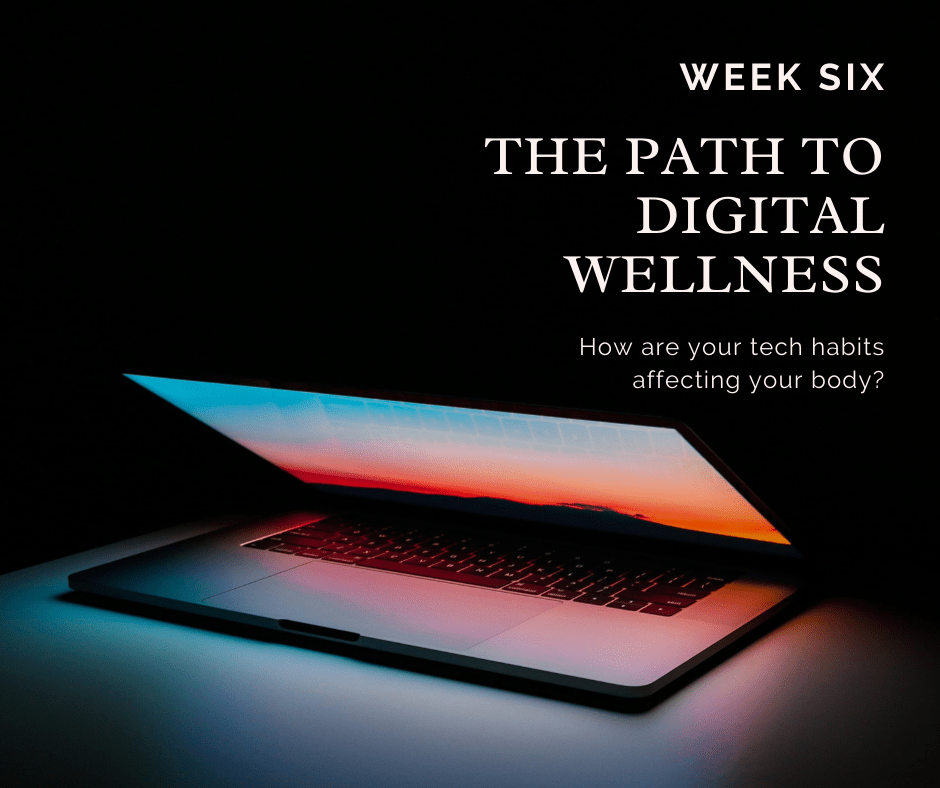A literal pain in the neck
Last week we talked about how technology can effect your mind, (via your thoughts, feelings, and actions). This week we’re going to look at the other half of the equation: technology’s impact on your body.
Undoubtedly, technology can play a role in improving physical health, (marketers would have you believe this is the very definition of the phrase, “digital wellness.”)
However, for every piece of tech that helps reduce pain, injury, or illness there is likely another contributing to you having that pain, injury, or illness in the first place.
That is because three things have grown alongside our use of technology…
- The amount of time we sit. Between 2007 and 2017, the estimated total time adults and teens spent sitting increased by nearly one hour per day.
- The amount of time we stare at screens. A 2018 Pew Research Center poll found 26% of adults report going online “almost constantly,” and a recent Nielson report found the average American spends more than 11 hours a day absorbing media.
- The amount of time we are physically inactive. In a 2018 study it was reported that 4 in 10 people engage in ZERO moderate or vigorous activity during the week.
These three trends, along with other factors, have lead to tech users developing a host of physical complaints like “Tech Neck,” “computer vision syndrome”/digital eye pain, back pain, carpal tunnel syndrome, sleep disturbances, and obesity.
“At (a tilt of) just 45 degrees, your neck muscles are doing the work of lifting a 50 lb. bag of potatoes.”
That’s just the stuff of which we’re aware.
Our daily tech habits and behaviors are still really new for us as a species. (My generation is the first in history raising children who have spent their lives using smart phones & tablets). We have no idea what the physical fallout will be from these tech habits 10, 25, or 50 years from now.
The mind/body connection
Not only is the way we’re using technology causing us physical problems, the content we’re consuming is inadvertently hurting us too.
As we discussed last week, our technology use can have a direct impact on how we think, feel, and act. Those thoughts, feelings, and actions don’t only occur in our heads. They also have physical sensations attached to them that live in our bodies. When those sensations, (particularly the stressful ones) happen regularly, the harmful effects can compound over time leading to the development of chronic health conditions.
For example, if you spend the evening reading inflammatory political news you might notice your body becoming more tense, your posture more scrunched, your face scowling. You might develop a small tension headache. You may notice your heart beating faster. Your cortisol levels may skyrocket through the roof.
For one night, that’s probably OK… especially if your intention was to get mad and motivated, (to return to last week’s exercise, does that kind of activity motivate you or merely leave you stewing in anger?)
However, when you engage in this same behavior night after night, (or throughout each day) thrusting your body into a fight or flight response over and over, it can cause lasting physical damage.
This week’s exercise
The first step to addressing this problem is to start checking in with your body more often about how it feels when you’re using technology.
Similar to last week, this week I’d like to invite you to simply write down two sentences, ideally each time you use technology for a significant period of time.
- Before you start using the technology, write down how your body feels at that moment in time. Is anything tight? In pain? Sore? No need to be terribly detailed, just conduct a quick body scan and write down what you notice. (Feel free to continue last week’s work and assess how your emotions feel too.)
- After you’ve finished using the technology, write down how/if the time spent had any impact on your body. How does your body feel afterwards? Do these sensations match up with your emotions right now? (For example, do you feel calm, but also notice a tightness across your chest, back, and neck? Perhaps there is disconnect and you’re not actually as calm as you thought.) Again, no need to be super detailed or even to get into the whys of your answers. Simply capture your basic impressions.
Like with last week’s exercise, our goal here is simply to increase your overall mindfulness about the effects of your daily habits on your body— recognizing that some behaviors have consequences and noting how slight or severe those consequences might be.
At this point, we’ve reached the end of our e-course sessions identifying and analyzing your technology problems areas and how/why they occur. Next week we’ll shift gears and start talking about making a game plan to improve the situation. I’m excited to forge ahead with you into this new territory!
Thank you for stopping by.
Want to participate in this eCourse?
1. Continue to drop by my blog or Medium account each Saturday where you can read the weekly post at your leisure, or…
2. Subscribe to this email list and I’ll send you a post each Saturday.
I’d love to hear your thoughts on this course as we go. Feel free to leave comments on any of the posts or email me at jen@jenkane.com if you’d like to share something privately.
Photo courtesy of @alesnesetril via unsplash





